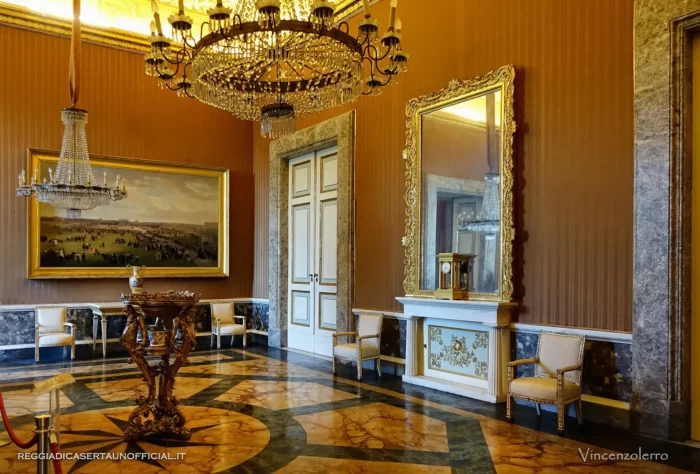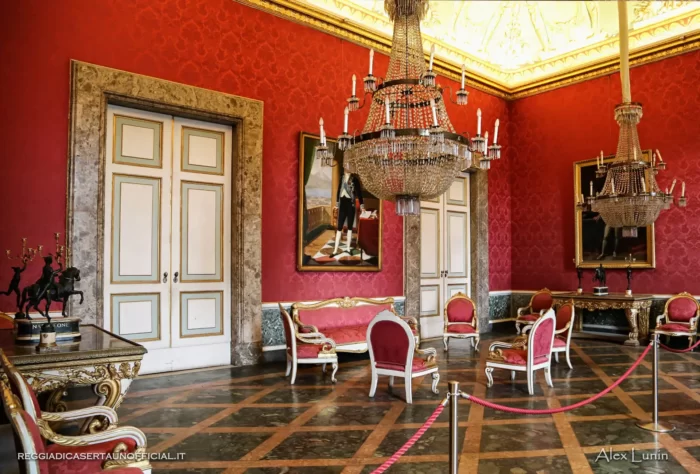Apartment of King Joachim Murat
The Apartment of King Joachim Murat gives a taste of the ancient splendor of the Royal Palace of Portici
The Royal Palace of Portici
The so-called “Apartment of King Joachim Murat” contains furnishings from the former Royal Palace of Portici which, after the unification of Italy, was dismembered and sold in 1871 by the King of Italy Vittorio Emanuele II of Savoy.

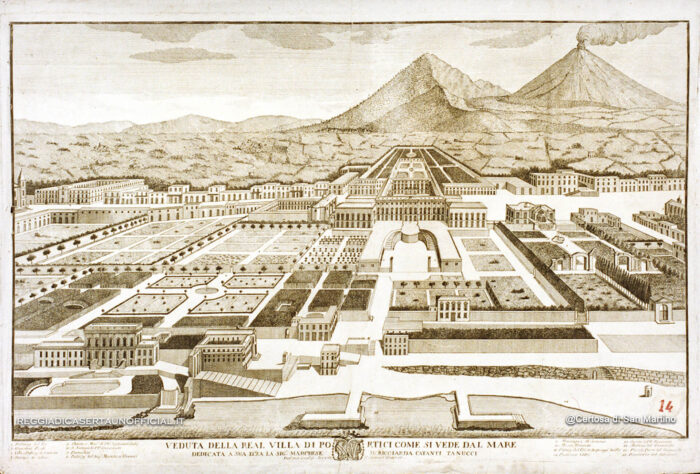
The Antechamber of King Joachim Murat's Apartment
The vault of the Antechamber of the Apartment of King Joachim Murat is decorated with a fresco by Franz Hill - “Minerva inviting Telemachus to leave Ithaca”, 1814-1815, while the walls are covered in striped San Leucio silk and plinth in marbles.
There are three paintings:
- Salvatore Fergola - "Knightly tournament in front of the Royal Palace of Caserta", 1847;
- Salvatore Fergola - "Tournament for the inauguration of the Naples-Caserta railway line", 1849;
- Heinrich Schmidt - "Joachim Murat visiting the Albergo dei Poveri", 1800-1821
The fireplace is in Carrara marble with columns and equipped with a large mirror in Murano glass with a gilded wooden frame. Above the fireplace is a gilded bronze temple clock. The consoles and the flower box are also of considerable artistic value.
There is a large mahogany sideboard with above it two bronzes with marble bases by Francesco Righetti depicting hunting dogs. Sevres vases and crystal chandeliers complete the furnishings of the Hall.
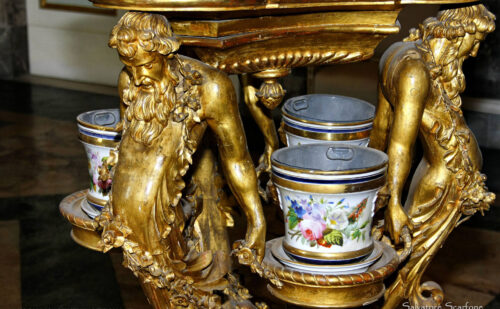
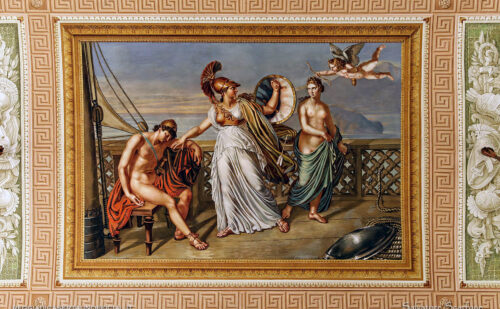
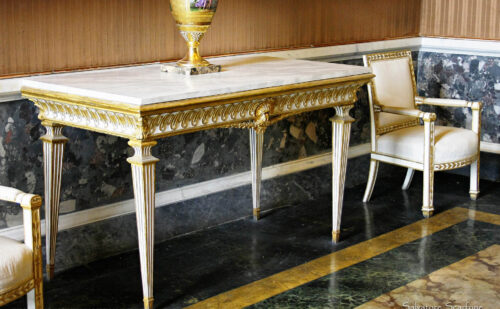
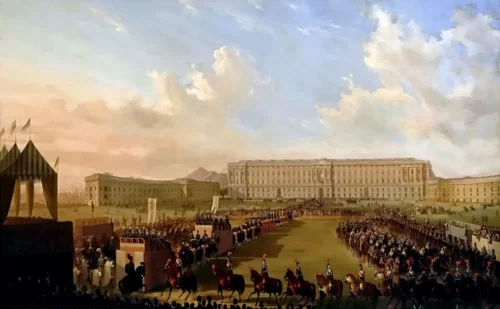
The Drawing Room
The vault of the living room of the Apartment of King Joachim Murat is decorated with a fresco by Giuseppe Cammarano - "Hector rebuking his brother Paris for the kidnapping of Helen", year 1818, while the walls are covered in red damask in San Leucio silk .
There are three large portraits of:
- Costanzo Angelini - "Giuseppe Bonaparte", 1808;
- Guillaume Desiré Joseph Descamps - "Minister Saliceti", 1809
- Martin Elias Ridinger – “Madame Letizia Bonaparte”, 1810.
And also the painting by Gaetano Gigante "Banquet for the poor offered by Gioacchino Murat" from 1811
The white-gold console of this room, most likely designed by the court architect Antonio Niccolini, demonstrates the considerable weight that the latter had in the evolution of the taste of the Court, taking it from the late Empire and Biedermeier styles towards the Neo-Baroque , above all after the arrival of the cabinetmaker Pietro Cheloni, already author of the renovation of Pitti Palace.
The bronzes with the equestrian statues of Napoleon and Murat are by Francesco Righetti.
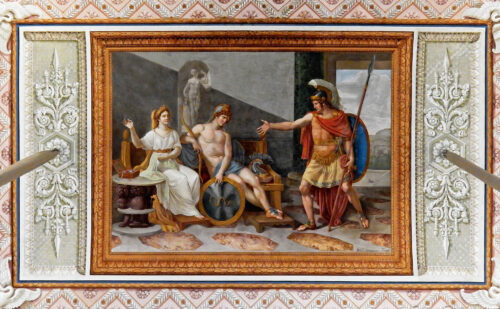
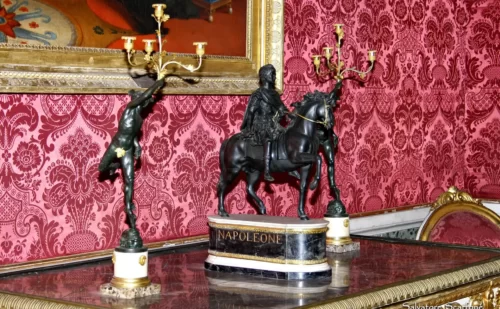
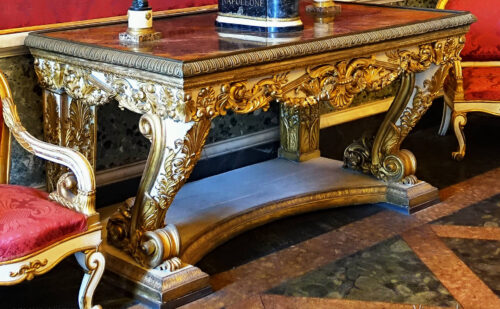

Bedroom of the Apartment of King Joachim Murat
The vault of the Bedroom of the Apartment of King Joachim Murat is decorated with a fresco in the Empire style on a yellow background with monochrome decorations on a gray and pink background. The walls are covered in striped San Leucio silk.
Paintings:
- Jean Baptiste Wicar - "Portrait of Julie Clary with her daughters Zenaide and Carlotta", 1809;
- Jean Baptiste Wicar - "Portrait of General Massena", 1808;
- Unknown - "Joachim Murat aboard the frigate Ceres", 1810-1815.
The Parisian architect and decorator in the service of Joachim Murat, Etienne-Chérubin Lecomte, was commissioned by the king to refurbish the rooms of his apartment using furnishings partly to be taken from the Royal Palace of Naples and partly to be built specifically for this purpose, such as those now in Caserta.
The elegance of a Carrara marble toilet (now in the Bathroom of the Bedroom of King Francis II), the splendor of the English and Turkish tapestries and carpets arranged on the floor had contributed to making this environment memorable to the English traveler . In the original bedroom in Portici there were also two exceptional bronze tripods with huge golden cups, and also a spectacular trophy of weapons with pistols, rifles and sabers won in the field or donated to him.
All these furniture in the Apartment of King Joachim Murat, of Neapolitan manufacture, take up the shape of the ornaments from the French models, but reworking them in a masterly way.


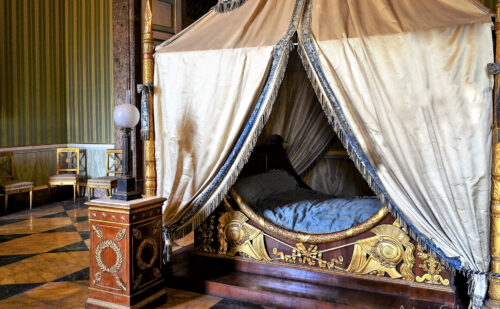
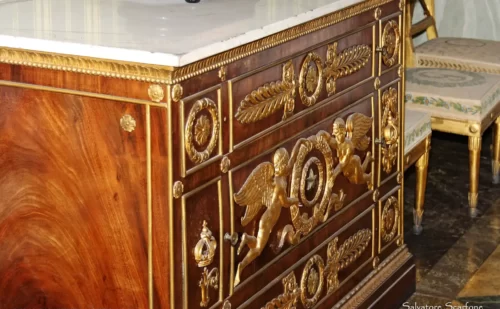
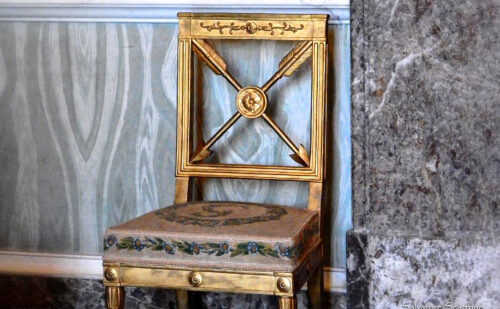

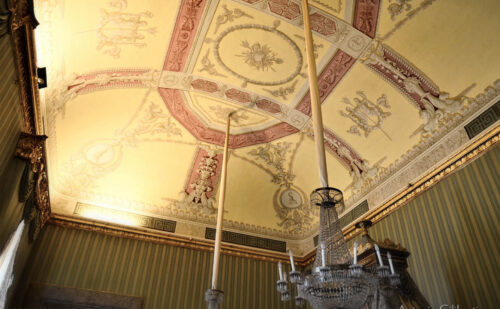

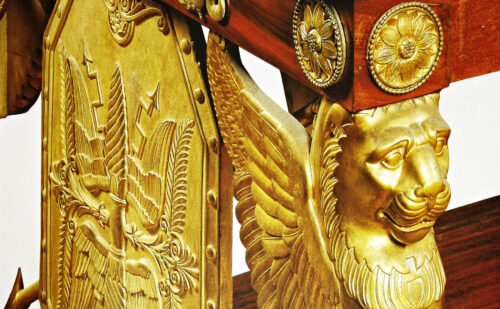
External link

